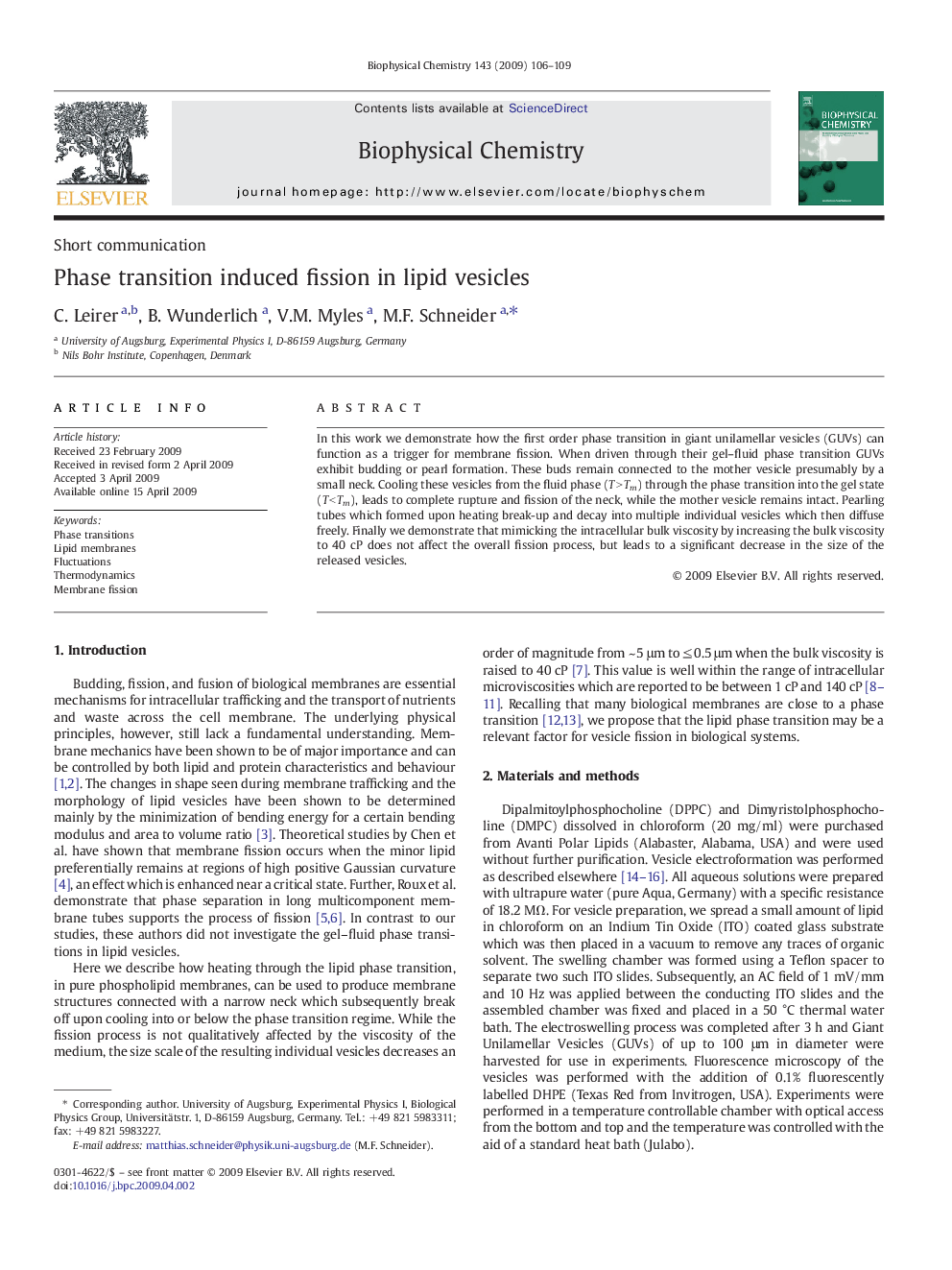| Article ID | Journal | Published Year | Pages | File Type |
|---|---|---|---|---|
| 5371695 | Biophysical Chemistry | 2009 | 4 Pages |
In this work we demonstrate how the first order phase transition in giant unilamellar vesicles (GUVs) can function as a trigger for membrane fission. When driven through their gel-fluid phase transition GUVs exhibit budding or pearl formation. These buds remain connected to the mother vesicle presumably by a small neck. Cooling these vesicles from the fluid phase (TÂ >Â Tm) through the phase transition into the gel state (TÂ <Â Tm), leads to complete rupture and fission of the neck, while the mother vesicle remains intact. Pearling tubes which formed upon heating break-up and decay into multiple individual vesicles which then diffuse freely. Finally we demonstrate that mimicking the intracellular bulk viscosity by increasing the bulk viscosity to 40Â cP does not affect the overall fission process, but leads to a significant decrease in the size of the released vesicles.
